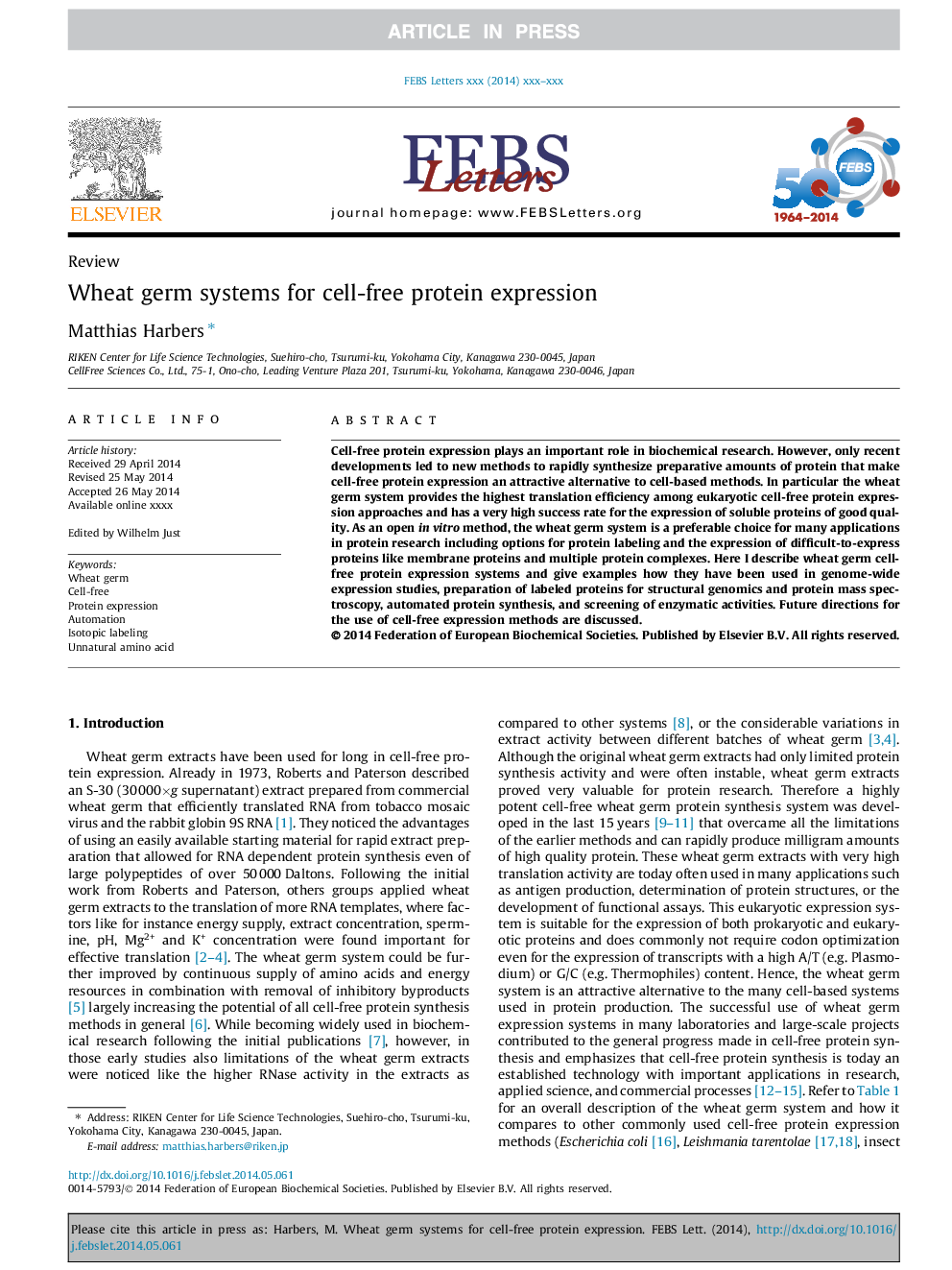| Article ID | Journal | Published Year | Pages | File Type |
|---|---|---|---|---|
| 10870135 | FEBS Letters | 2014 | 12 Pages |
Abstract
Cell-free protein expression plays an important role in biochemical research. However, only recent developments led to new methods to rapidly synthesize preparative amounts of protein that make cell-free protein expression an attractive alternative to cell-based methods. In particular the wheat germ system provides the highest translation efficiency among eukaryotic cell-free protein expression approaches and has a very high success rate for the expression of soluble proteins of good quality. As an open in vitro method, the wheat germ system is a preferable choice for many applications in protein research including options for protein labeling and the expression of difficult-to-express proteins like membrane proteins and multiple protein complexes. Here I describe wheat germ cell-free protein expression systems and give examples how they have been used in genome-wide expression studies, preparation of labeled proteins for structural genomics and protein mass spectroscopy, automated protein synthesis, and screening of enzymatic activities. Future directions for the use of cell-free expression methods are discussed.
Related Topics
Life Sciences
Agricultural and Biological Sciences
Plant Science
Authors
Matthias Harbers,
